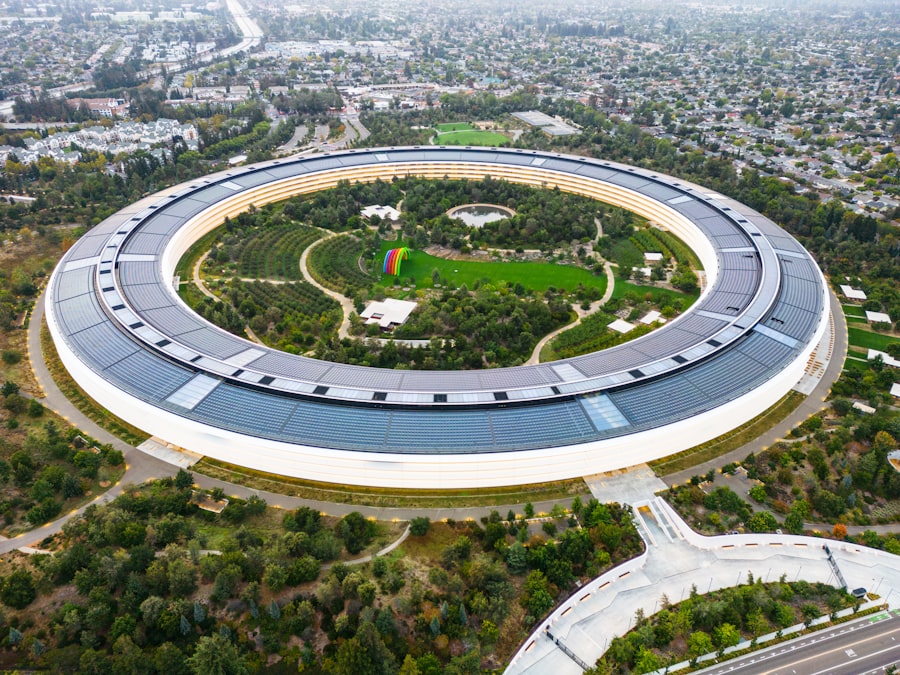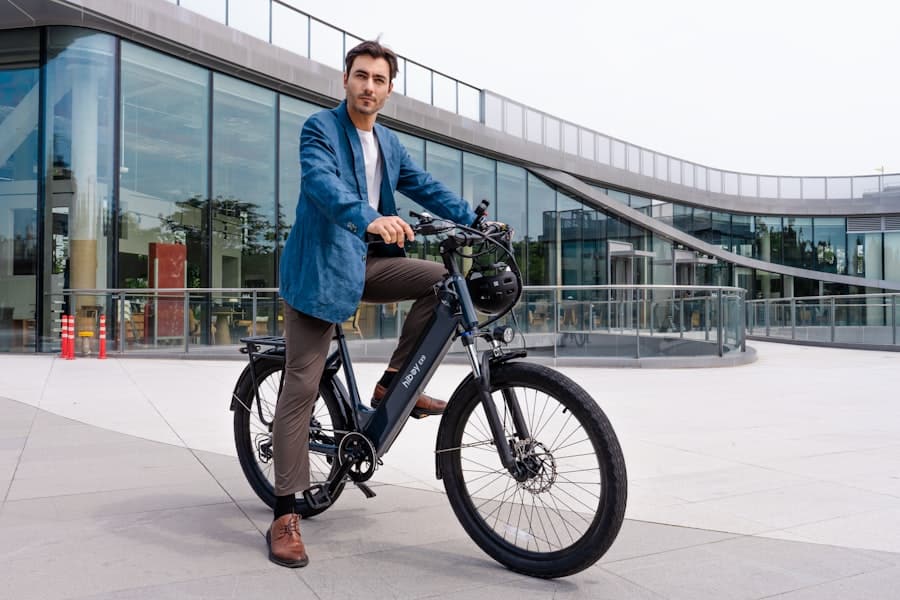The modern home is increasingly becoming a focal point for sustainability, with green innovations in home appliances leading the charge toward a more eco-friendly lifestyle. As awareness of climate change and environmental degradation grows, consumers are seeking ways to reduce their carbon footprint, and the appliances they use play a significant role in this endeavor. Green innovations encompass a wide range of technologies and practices designed to minimize energy consumption, reduce waste, and promote the use of sustainable materials.
This shift is not merely a trend; it represents a fundamental change in how we think about our living spaces and the impact they have on the planet. The evolution of home appliances has been marked by a growing emphasis on efficiency and sustainability. Manufacturers are now prioritizing the development of products that not only perform well but also contribute to environmental conservation.
This includes everything from energy-efficient refrigerators to smart home systems that monitor energy usage. As consumers become more educated about the environmental impact of their choices, they are increasingly inclined to invest in appliances that align with their values. The integration of green technologies into everyday household items is not just beneficial for the environment; it also offers significant advantages for consumers, including cost savings and improved convenience.
Key Takeaways
- Green innovations in home appliances focus on reducing energy consumption and environmental impact.
- Energy-efficient refrigerators and freezers use advanced technology to minimize electricity usage.
- Eco-friendly washing machines and dryers utilize water and energy-saving features for sustainable laundry practices.
- Sustainable dishwashers and water conservation systems help minimize water wastage in households.
- Smart home technology and energy monitoring enable users to track and control their energy usage for more efficient appliance operation.
Energy-Efficient Refrigerators and Freezers
Energy-efficient refrigerators and freezers are at the forefront of green innovations in home appliances. These appliances are designed to consume significantly less energy than their traditional counterparts, which can lead to substantial savings on electricity bills over time. For instance, ENERGY STAR-rated refrigerators use about 15% less energy than non-rated models, translating to an average savings of $200 over the appliance’s lifetime.
This efficiency is achieved through advanced insulation materials, improved compressor technology, and features such as variable-speed compressors that adjust cooling power based on the contents of the fridge. Moreover, many modern refrigerators come equipped with smart technology that allows users to monitor and control their energy consumption remotely. For example, some models feature Wi-Fi connectivity that enables homeowners to receive alerts about energy usage patterns or even adjust settings from their smartphones.
This level of control not only enhances convenience but also encourages users to adopt more energy-conscious habits. Additionally, innovations such as dual evaporators help maintain optimal humidity levels for different compartments, reducing food spoilage and waste, which further contributes to sustainability efforts.
Eco-Friendly Washing Machines and Dryers

Washing machines and dryers have also undergone significant transformations in terms of energy efficiency and environmental impact.
These machines often feature sensors that detect load size and adjust water levels accordingly, ensuring that no excess water is wasted.
For instance, a typical HE washing machine can save up to 40% more water compared to traditional models while still delivering superior cleaning performance. In addition to water conservation, eco-friendly dryers are now incorporating heat pump technology, which uses a closed-loop system to recycle hot air within the dryer. This method consumes significantly less energy than conventional electric dryers, which vent hot air outside.
Some models even offer moisture sensors that automatically stop the drying cycle when clothes are adequately dry, preventing over-drying and reducing energy consumption further. The combination of these technologies not only benefits the environment but also enhances the longevity of clothing by minimizing wear and tear during the drying process.
Sustainable Dishwashers and Water Conservation
Dishwashers have evolved into highly efficient appliances that prioritize water conservation without compromising cleaning effectiveness. Modern dishwashers are designed to use significantly less water than hand washing, with many models consuming as little as three gallons per cycle compared to the average 27 gallons used when washing dishes by hand. This remarkable reduction is achieved through advanced spray arm designs and soil sensors that optimize water usage based on the level of dirtiness detected.
Furthermore, many eco-friendly dishwashers are equipped with energy-saving modes that operate at lower temperatures or use shorter cycles to conserve both water and electricity. Some models even feature smart technology that allows users to schedule wash cycles during off-peak hours when energy rates are lower, further enhancing their sustainability profile. The integration of these features not only contributes to environmental conservation but also provides consumers with a more efficient and convenient way to manage their dishwashing needs.
Smart Home Technology and Energy Monitoring
The rise of smart home technology has revolutionized how homeowners interact with their appliances, providing unprecedented levels of control and monitoring capabilities. Smart appliances can be connected to home networks, allowing users to track energy consumption in real-time through mobile applications or smart home hubs. This transparency empowers consumers to make informed decisions about their energy usage and identify areas where they can reduce waste.
For example, smart thermostats can learn user habits and adjust heating or cooling settings accordingly, optimizing energy consumption throughout the day. Similarly, smart plugs can be used with traditional appliances to monitor their energy usage and schedule operation during off-peak hours. The ability to remotely control appliances not only enhances convenience but also encourages more sustainable practices by making it easier for users to manage their energy consumption effectively.
Renewable Energy Integration in Home Appliances

The integration of renewable energy sources into home appliances represents a significant advancement in green technology. Many modern appliances are now designed to work seamlessly with solar panels or other renewable energy systems, allowing homeowners to harness clean energy for their daily needs. For instance, solar-powered water heaters can provide hot water for washing dishes or laundry without relying on fossil fuels or grid electricity.
Additionally, some manufacturers are developing appliances that can store excess energy generated from renewable sources for later use. This capability is particularly beneficial for electric vehicles (EVs), which can be charged using solar power generated during the day and used at night when electricity demand is typically higher. By incorporating renewable energy solutions into home appliances, consumers can significantly reduce their reliance on non-renewable resources while contributing to a more sustainable future.
Green Materials and Design in Appliance Manufacturing
The push for sustainability extends beyond energy efficiency; it also encompasses the materials used in appliance manufacturing. Many companies are now prioritizing eco-friendly materials such as recycled plastics, sustainably sourced metals, and biodegradable components in their products. This shift not only reduces the environmental impact of production but also promotes a circular economy where materials can be reused or recycled at the end of an appliance’s life cycle.
Design plays a crucial role in this process as well. Manufacturers are increasingly adopting modular designs that allow for easy repair and replacement of individual components rather than requiring entire units to be discarded when one part fails. This approach not only extends the lifespan of appliances but also minimizes waste in landfills.
Furthermore, eco-design principles encourage manufacturers to consider the entire lifecycle of an appliance—from production through disposal—ensuring that sustainability is integrated into every stage of development.
Consumer Benefits and Future Trends in Green Home Appliances
The benefits of investing in green home appliances extend beyond environmental considerations; they also offer tangible advantages for consumers. Energy-efficient appliances often come with lower operating costs due to reduced energy consumption, leading to significant savings over time. Additionally, many governments offer incentives such as tax credits or rebates for purchasing ENERGY STAR-rated products, making them more financially accessible for consumers.
Looking ahead, the future of green home appliances appears promising as technology continues to advance.
Furthermore, as renewable energy technologies become more widespread and affordable, we can anticipate an increase in appliances designed specifically for integration with these systems.
As consumer awareness grows regarding environmental issues, the demand for sustainable products will likely continue to rise. Manufacturers will need to adapt by investing in research and development focused on creating even more efficient and eco-friendly appliances. The convergence of technology, sustainability, and consumer demand will shape the future landscape of home appliances, paving the way for a greener and more sustainable living environment for generations to come.
In the quest to create more sustainable living environments, the article “Exploring Green Innovations in Home Appliances” delves into the latest advancements in eco-friendly technology for household devices. A related read that complements this topic is the article on Top Trends in E-Commerce Business, which discusses how the rise of online shopping is influencing the demand for energy-efficient products. This trend is not only reshaping consumer behavior but also encouraging manufacturers to innovate and prioritize sustainability in their product offerings.
FAQs
What are green innovations in home appliances?
Green innovations in home appliances refer to the development and implementation of technologies and practices that reduce energy consumption, water usage, and overall environmental impact. These innovations aim to make household appliances more efficient and eco-friendly.
What are some examples of green innovations in home appliances?
Examples of green innovations in home appliances include energy-efficient refrigerators, washing machines with water-saving features, smart thermostats for heating and cooling, and induction cooktops that use less energy than traditional stovetops. Additionally, appliances with eco-friendly materials and manufacturing processes also contribute to green innovations.
How do green innovations benefit consumers?
Green innovations in home appliances benefit consumers by helping them save on energy and water bills, reducing their environmental footprint, and contributing to a healthier and more sustainable lifestyle. These innovations also often come with government incentives and rebates, making them more affordable for consumers.
What are the environmental benefits of green innovations in home appliances?
Green innovations in home appliances help reduce greenhouse gas emissions, conserve natural resources such as water and electricity, and minimize the overall environmental impact of household activities. By using energy and water more efficiently, these innovations contribute to a healthier planet.
How can consumers identify green innovations in home appliances?
Consumers can identify green innovations in home appliances by looking for energy star ratings, eco-friendly certifications, and product labels that indicate energy and water efficiency. They can also research and compare different models to find the most environmentally friendly options.

